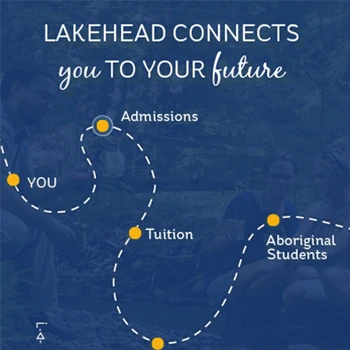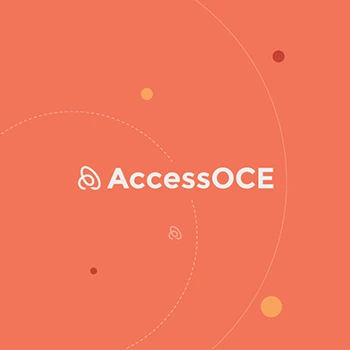What is Experience Thinking and how does it apply to government services?
Experience Thinking is a framework that creates connected experiences across four key areas: brand, content, product, and service. For government services, this means designing citizen journeys that seamlessly connect online portals, in-person service centers, phone support, and digital documents. The approach ensures that citizens experience consistent, intuitive interactions regardless of which touchpoint they use.
Tip: Ask how Experience Thinking principles will be applied across all your service channels to create a unified citizen experience.
How does citizen-centered design differ from traditional government service development?
Citizen-centered design starts with understanding real citizen needs, behaviors, and pain points through research, rather than assumptions about what citizens want. Traditional development often begins with technical requirements or policy constraints. The citizen-centered approach validates designs with actual users before building, reducing costly mistakes and ensuring services meet genuine needs.
Tip: Verify that proposed research methods include direct citizen engagement, not just stakeholder assumptions.
What makes government UX different from private sector UX?
Government UX must serve diverse populations with varying digital literacy levels, ensure accessibility for all abilities, comply with strict regulations, and maintain public trust. Unlike private sector services that can target specific demographics, government services must work for everyone. This requires deeper accessibility considerations, clearer language, and more robust testing across user groups.
Tip: Ensure your UX approach includes specific strategies for serving vulnerable and underserved populations.
How do you balance policy requirements with user-friendly design?
Effective government UX translates complex policy requirements into clear, actionable steps for citizens. This involves working closely with policy experts to understand the intent behind regulations, then designing interfaces that guide citizens through compliance naturally. The goal is making mandatory processes feel intuitive rather than burdensome.
Tip: Look for experience working with policy stakeholders and examples of simplifying complex regulatory processes.
What role does trust play in government digital services?
Trust is fundamental to citizen engagement with government services. Citizens need confidence that their data is secure, their submissions are received, and their needs will be addressed. UX design builds trust through clear communication, transparent processes, visible security measures, and reliable performance. Every interaction either strengthens or weakens this trust relationship.
Tip: Discuss specific design strategies for building and maintaining citizen trust throughout the service journey.
How does the Experience Thinking framework address government service silos?
Experience Thinking connects traditionally separate government departments and services from the citizen's perspective. Rather than forcing citizens to understand government structure, it designs pathways that feel natural regardless of which departments are involved behind the scenes. This creates coherent journeys even when multiple agencies must collaborate.
Tip: Ask about experience designing cross-departmental services and strategies for internal stakeholder alignment.
What is the connection between service design and citizen satisfaction?
Service design directly impacts citizen satisfaction by reducing effort, eliminating confusion, and respecting citizens' time. Well-designed services anticipate citizen needs, provide clear next steps, and prevent common errors. This reduces support calls, improves completion rates, and increases public confidence in government effectiveness.
Tip: Inquire about metrics for measuring citizen satisfaction improvements and expected outcomes.
What research methods work best for understanding citizen needs?
Effective citizen research combines multiple methods: contextual interviews to understand real-world service use, journey mapping to identify pain points, usability testing to validate designs, and analytics to track actual behavior. Each method reveals different insights about how citizens interact with government services and where improvements are needed.
Tip: Ensure the research plan includes both qualitative insights and quantitative validation methods.
How do you research hard-to-reach or vulnerable populations?
Researching vulnerable populations requires specialized approaches: partnering with community organizations, conducting research in familiar environments, offering multiple participation methods, and ensuring cultural sensitivity. This might include in-person sessions at community centers, translated materials, or working with trusted intermediaries who can facilitate engagement.
Tip: Verify experience with inclusive research methods and ask about specific approaches for your target populations.
What is the typical timeline for citizen experience research?
Comprehensive citizen research typically takes 6-12 weeks, depending on scope. This includes recruitment (2-3 weeks), data collection (2-4 weeks), analysis (2-3 weeks), and reporting (1-2 weeks). Rushed research risks missing critical insights, while overly extended timelines delay improvements citizens need.
Tip: Discuss how research timelines align with your project deadlines and budget cycles.
How do you validate research findings with diverse citizen groups?
Validation involves testing findings across different demographics, abilities, and contexts. This includes recruiting participants who represent your full citizen base, testing in various environments, and ensuring findings hold true across different scenarios. Proper validation prevents solutions that work for some but exclude others.
Tip: Ask about participant recruitment strategies and how demographic representation is ensured.
What insights does journey mapping reveal for government services?
Journey mapping uncovers the complete citizen experience across all touchpoints, revealing gaps, redundancies, and friction points. It shows where citizens get confused, abandon processes, or seek help. These maps become blueprints for improvement, highlighting which changes will have the greatest impact on citizen success.
Tip: Ensure journey mapping includes both current state analysis and future state visioning.
How do you measure the current citizen experience baseline?
Baseline measurement combines multiple data sources: task completion rates, time-on-task metrics, error frequencies, support ticket analysis, and citizen satisfaction scores. This creates a comprehensive picture of current performance and establishes benchmarks for measuring improvement after UX enhancements.
Tip: Discuss which baseline metrics matter most for your services and how they'll be tracked.
What role does ethnographic research play in government UX?
Ethnographic research reveals how citizens actually use government services in their real-world contexts. By observing citizens in their environments, researchers uncover workarounds, environmental constraints, and unstated needs that surveys or lab testing might miss. This deep understanding informs more effective design solutions.
Tip: Consider ethnographic research for services where context significantly impacts usage.
How do you design for citizens with varying digital literacy levels?
Designing for diverse digital literacy involves progressive disclosure, clear visual hierarchies, plain language, and optional guidance. Interfaces must work for tech-savvy users seeking efficiency while supporting those who need more help. This includes contextual help, visual cues, and alternative paths for completing tasks.
Tip: Review examples of interfaces that successfully serve both novice and experienced users.
What accessibility standards should government services meet?
Government services must meet WCAG 2.1 Level AA standards at minimum, with many aiming for AAA compliance. This includes keyboard navigation, screen reader compatibility, sufficient color contrast, and clear focus indicators. Beyond compliance, true accessibility means testing with users who have disabilities to ensure genuine usability.
Tip: Confirm that accessibility testing includes real users with disabilities, not just automated tools.
How do you simplify complex government forms and processes?
Simplification involves breaking complex processes into manageable steps, using progressive disclosure to show only relevant fields, providing clear instructions at the point of need, and designing smart defaults. The goal is guiding citizens through requirements without overwhelming them or hiding necessary information.
Tip: Ask to see before-and-after examples of complex form simplification.
What design patterns work best for government services?
Effective government design patterns include step-by-step wizards for complex processes, clear status indicators showing progress, prominent help options, and consistent navigation. These patterns should feel familiar to citizens while meeting government-specific needs like audit trails and compliance tracking.
Tip: Discuss how design patterns will be documented and maintained for consistency.
How do you ensure consistent experience across service channels?
Consistency requires design systems that define visual standards, interaction patterns, and content guidelines across all channels. This includes coordinating between digital interfaces, printed materials, phone scripts, and in-person service protocols. Citizens should feel they're dealing with one unified government, not disparate systems.
Tip: Inquire about experience creating and implementing government design systems.
What is the role of content design in government UX?
Content design is crucial for government services, translating complex policies into clear, actionable language. This involves plain language writing, logical information architecture, helpful error messages, and accessible documentation. Good content design reduces confusion, prevents errors, and builds citizen confidence.
Tip: Ensure content design expertise is included in the UX approach, not treated as an afterthought.
How do you design for mobile-first government services?
Mobile-first design recognizes that many citizens primarily access services through smartphones. This means designing for small screens first, optimizing for touch interactions, minimizing data usage, and ensuring forms work well on mobile devices. Desktop becomes an enhancement rather than the default.
Tip: Verify that mobile design includes testing on various devices and network conditions.
How do you integrate UX improvements with existing government systems?
Integration requires understanding technical constraints while finding opportunities for improvement. This might involve creating better front-end experiences while maintaining backend systems, developing APIs to connect services, or planning phased migrations. The approach balances ideal user experience with technical feasibility.
Tip: Discuss experience working with legacy systems and strategies for incremental improvement.
What is the typical timeline for implementing UX improvements?
Implementation timelines vary based on scope: quick wins might deploy in 2-3 months, major service redesigns typically take 6-12 months, and full digital transformation can span multiple years. Effective planning identifies high-impact improvements for early delivery while building toward long-term transformation.
Tip: Ask about phased delivery approaches that provide value quickly while building toward larger goals.
How do you ensure UX improvements align with policy changes?
Alignment requires close collaboration with policy teams throughout the design process. UX professionals must understand policy intent and constraints while policy makers need to understand user impact. Regular touchpoints ensure designs remain compliant while advocating for citizen-friendly policy interpretations.
Tip: Verify experience navigating the intersection of policy requirements and user needs.
What change management is needed for UX transformation?
Successful UX transformation requires preparing both staff and citizens for change. This includes training government employees on new systems, communicating changes to citizens, and providing support during transitions. Change management ensures improvements are adopted rather than resisted.
Tip: Discuss specific change management strategies and support materials included in the approach.
How do you measure the success of UX improvements?
Success measurement tracks both citizen outcomes and operational efficiency: task completion rates, time savings, error reduction, support ticket decreases, and satisfaction improvements. Establishing clear metrics before implementation enables data-driven demonstration of UX value and ROI.
Tip: Ensure success metrics align with your organization's strategic goals and reporting needs.
What ongoing support is needed after UX implementation?
Post-implementation support includes monitoring performance, gathering citizen feedback, training new staff, and making iterative improvements. Government services evolve with policy changes and citizen needs, requiring ongoing UX attention rather than one-time fixes.
Tip: Plan for long-term UX support and continuous improvement processes.
How do you build internal UX capability within government?
Building internal capability involves knowledge transfer during projects, training government staff in UX methods, establishing design standards and processes, and creating centers of excellence. This ensures government can maintain and evolve UX improvements independently over time.
Tip: Discuss knowledge transfer approaches and training options for government staff.
How does AI integration impact government UX design?
AI can enhance government services through intelligent form completion, predictive assistance, and natural language interfaces. However, AI in government requires careful attention to transparency, fairness, and accountability. UX design must make AI assistance helpful while maintaining citizen control and understanding of automated decisions.
Tip: Explore how AI could improve specific citizen pain points while maintaining trust and transparency.
What role does UX play in digital government transformation?
UX is central to successful digital transformation, ensuring technology changes actually improve citizen outcomes. It bridges the gap between technical possibilities and citizen needs, preventing digitization that simply replicates paper processes online. UX makes transformation meaningful rather than just digital.
Tip: Verify that digital transformation plans include citizen research and iterative design, not just technology implementation.
How do you modernize legacy services without disrupting citizens?
Modernization requires careful transition planning: running parallel systems during migration, providing clear communication about changes, maintaining familiar elements where possible, and offering support for citizens who struggle with new interfaces. The goal is improvement without abandonment.
Tip: Ask about specific strategies for smooth transitions and supporting citizens through change.
What emerging technologies should government UX consider?
Emerging technologies like voice interfaces, chatbots, and augmented reality offer new ways to serve citizens. However, government adoption must consider equity, accessibility, and digital divide issues. UX design evaluates which technologies genuinely improve service delivery versus those that might exclude vulnerable populations.
Tip: Focus on technologies that solve real citizen problems rather than following trends.
How do you design for omnichannel government services?
Omnichannel design ensures citizens can start tasks in one channel and complete them in another seamlessly. This requires unified backend systems, consistent information across channels, and careful journey orchestration. Citizens should feel supported whether online, on phone, or in person.
Tip: Discuss how different channels will be coordinated and data will be shared appropriately.
What is the future of government service delivery?
Future government services will be more proactive, personalized, and predictive while maintaining privacy and equity. This includes services that anticipate citizen needs, reduce repetitive information requests, and provide tailored guidance. UX design shapes this future by understanding evolving citizen expectations.
Tip: Consider how current UX investments prepare for future service evolution.
How do you balance innovation with reliability in government UX?
Government services must innovate while maintaining absolute reliability. This balance involves careful testing, gradual rollouts, and fallback options. UX design identifies where innovation adds value versus where familiarity and stability matter most to citizens.
Tip: Discuss risk management approaches for introducing new design patterns or technologies.
What procurement vehicles are available for government UX services?
Various procurement options exist including standing offers like ProServices and TBIPS, with different thresholds and requirements. Smaller projects under specific dollar amounts can proceed quickly, while larger initiatives may require formal RFPs. Understanding these vehicles helps expedite procurement while ensuring compliance.
Tip: Identify which procurement vehicle best fits your project scope and timeline early in planning.
How do we scope UX services for government procurement?
Effective scoping defines clear deliverables, timelines, and success criteria while maintaining flexibility for user-centered iteration. This includes specifying research activities, design phases, testing requirements, and implementation support. Good scoping balances procurement requirements with UX best practices.
Tip: Include provisions for iterative design and citizen feedback in procurement specifications.
What should we look for in government UX expertise?
Key expertise includes understanding government constraints, experience with diverse citizen populations, accessibility knowledge, and ability to navigate policy requirements. Look for demonstrated success improving government services, not just private sector experience. Government UX requires specialized skills beyond general UX practice.
Tip: Evaluate specific government project examples and outcomes, not just general UX portfolios.
How do we evaluate UX proposals for government projects?
Evaluation should assess understanding of citizen needs, proposed research methods, design approach, accessibility commitment, and implementation feasibility. Look beyond impressive visuals to understand methodology, citizen engagement plans, and measurable outcomes. The best proposals demonstrate deep government service understanding.
Tip: Include citizen representatives or UX experts in proposal evaluation committees.
What is the typical investment for government UX projects?
Investment varies significantly based on service complexity, citizen reach, and transformation scope. Small improvements might require modest investments, while major service redesigns require substantial budgets. However, UX investment typically returns significant value through reduced support costs and improved citizen outcomes.
Tip: Consider total cost of ownership including reduced support needs when evaluating UX investment.
How do we ensure knowledge transfer in government UX contracts?
Knowledge transfer should be built into contracts through documentation requirements, training deliverables, and collaborative working models. This includes design system creation, process documentation, and hands-on training for government staff. Effective transfer ensures sustainable improvements beyond contract completion.
Tip: Specify knowledge transfer expectations and deliverables explicitly in procurement documents.
What ongoing relationship models work for government UX?
Successful models include retainer arrangements for continuous improvement, framework agreements for multiple projects, and center-of-excellence partnerships. These relationships allow for responsive support as citizen needs evolve and policies change. Long-term partnerships often provide better value than project-by-project procurement.
Tip: Consider multi-year arrangements that support continuous service improvement rather than one-time fixes.
How do we demonstrate ROI for government UX investment?
ROI measurement includes both quantitative metrics (reduced call volumes, faster completion times, fewer errors) and qualitative improvements (citizen satisfaction, trust, accessibility). Calculate cost savings from reduced support needs, improved completion rates, and error prevention. Document both immediate wins and long-term value creation.
Tip: Establish baseline metrics before improvements to clearly demonstrate impact.
What metrics matter most for government service UX?
Critical metrics include task completion rates, time-to-completion, error rates, abandonment points, citizen satisfaction scores, and support ticket volumes. Digital inclusion metrics ensure services work for all citizens. Choose metrics that reflect both operational efficiency and citizen success.
Tip: Align UX metrics with organizational KPIs and government service standards.
How do we track citizen satisfaction improvements?
Citizen satisfaction tracking combines standardized surveys, feedback mechanisms, behavioral analytics, and sentiment analysis. Regular measurement intervals show trends over time. Multi-channel feedback ensures all citizen voices are heard, not just those comfortable with digital tools.
Tip: Implement continuous feedback loops rather than relying solely on annual surveys.
What is the impact of UX on government operational efficiency?
Good UX dramatically improves operational efficiency by reducing support calls, preventing errors that require manual intervention, and increasing first-time success rates. Staff spend less time helping confused citizens and more time on complex cases requiring human judgment. This multiplier effect justifies UX investment.
Tip: Track operational metrics alongside citizen metrics to show full UX impact.
How do we measure accessibility improvements?
Accessibility measurement goes beyond compliance checking to include usage by citizens with disabilities, task success rates across ability levels, and feedback from accessibility communities. True measurement involves real users with disabilities, not just automated testing tools.
Tip: Partner with disability advocacy groups for authentic accessibility assessment.
What long-term benefits does UX investment provide?
Long-term benefits include increased citizen trust, reduced service delivery costs, improved policy compliance, and enhanced government reputation. Well-designed services require fewer updates, generate less confusion, and adapt more easily to policy changes. Initial investment compounds over service lifetime.
Tip: Document both immediate and projected long-term benefits in business cases.
How do we build a culture of continuous UX improvement?
Building UX culture requires leadership support, regular citizen feedback integration, staff training, and celebration of improvements. Establish regular design reviews, citizen testing cycles, and improvement sprints. Make UX thinking part of policy development and service planning from the start.
Tip: Create UX champions within different departments to advocate for citizen-centered approaches.









